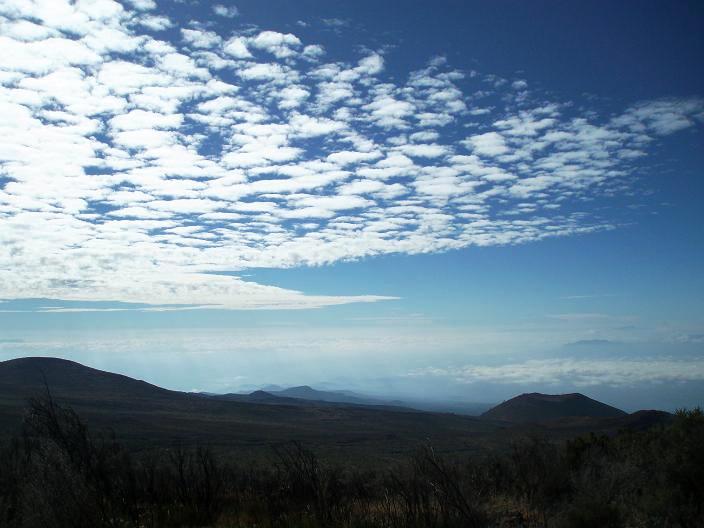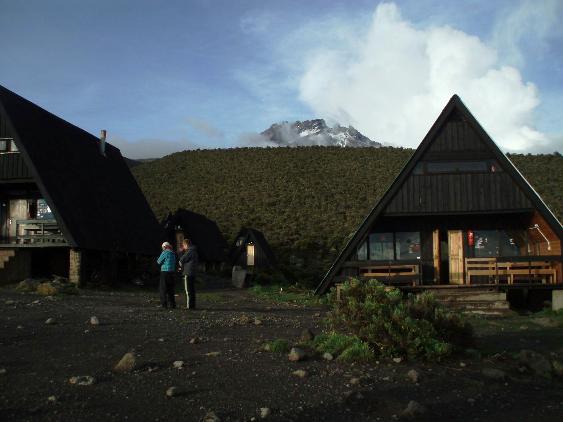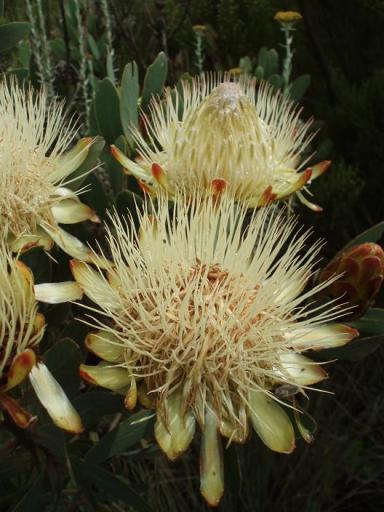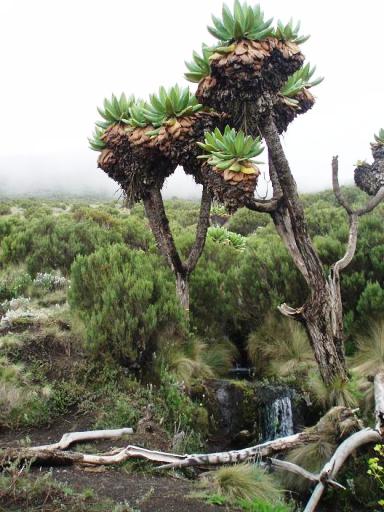Celebrity in the room
My private world of Kilimanjaro legends had been interrupted by a company of porters stampeding down the trail.
Immense loads swayed on their shoulders and yet they galloped sure-footedly over the rough ground wearing flip-flops made from old car tyres, a typically African innovation that puts Western recycling efforts to shame.
Behind them, the stocky, snow-bound outline of Kibo had re-appeared on the horizon, up-staging the undulating, giant-groundsel peppered landscape. It is possible that the name Kilimanjaro is derived from Swahili words meaning Shining Mountain and when her glaciated summit sparkles in the sunlight, such a poetic moniker seems entirely appropriate. The summit’s appearance never fails to mesmerise; it is the celebrity in the room and no matter how beautiful your immediate surroundings, whenever Kibo makes an entrance, all eyes turn.
By now I was deep into the Afro-alpine region, a unique and enchanting landscape of rolling moorland, giant heather trees and knee-high tussocks of grass. At this altitude, the sun is refreshingly warm and it is quite possibly the most pleasant part of the climb. Proximity to the equator guarantees year round, daytime warmth but the high altitude causes the temperature to plummet with matching regularity each night. This "summer every day, winter every night" climate is intolerable to species not specifically adapted to the environment.
Therefore, Kilimanjaro (along with nine neighbouring peaks*) is home to several species found nowhere else in the world. These nine mountains, sometimes described as “islands in the sky” because of the isolation of their habitats, harbour evolutionary marvels as informative and fascinating as those of the Galapagos archipelago. Botanically, the environment is extraordinary but even a floral-illiterate like me can appreciate the splendid flowers that decorate the foreground.
And there is geological splendour too. The gently rolling contours of the Afro-alpine wilderness occasionally drop you into narrow gorges where sturdy bridges carry you high above foaming torrents of melt-water. To the right of the trail, the frost covered, fairytale pinnacles of Mawenzi stab high into the deep blue morning sky. Later in the day clouds twisted between Mawenzi’s spires, slowly obscuring her weathered facade beneath a chilly shroud.
Hours later I bathed in the dying embers of the day on the rocky escarpment of Horombo. Clouds had rolled in during the afternoon but as dusk gathered they drew apart leaving the jagged spires of Mawenzi outlined by the A-frame huts of the camp. The temperature had already started to plummet and I had just togged up in anticipation of a chilly evening. So when the setting sun unexpectedly broke through, I basked like a lizard, sucking up all the warmth I could before the icy night closed in.
As the sky cleared, the evening light danced across the distant plains and threw shadows across the dimple top of Sacrifice Hill far below. The walls of its caldera shimmered with vitality as a breeze rippled over the dry grass. This halo of golden meadowland contrasted brightly with the murky dusk that had already filled its shallow summit depression, out of which a wisp of smoke curled idly heavenwards.

View of the distant plains with Sacrifice Hill (bottom right) in the relative foreground.

The jagged outline of Mawenzi framed by the Horombo huts.
But the sun sunk fast, abruptly extinguishing the halo of dancing grass. Kilimanjaro is just three degrees south of the equator and, to eyes accustomed to the gradual onset of night that is familiar at higher latitudes, the tropical nightfall seems to occur with the dizzying swiftness of a time lapse photography sequence. The light just drains away as if someone has pulled a plug and the day is being sucked into a vortex.
Even as the mountain’s profile dissolved into the blackness, the lights of Moshi began twinkling far below. I knew that tourists in shirtsleeves would be sipping sundowners on rooftop terraces, admiring the afterglow that still lingered on the summit glaciers. I envied their cosy contentment as I pulled the zip of my jacket tight beneath my chin. Then I turned slowly through 360 degrees, taking in the rugged serrations of Mawenzi, the squat hulk of Kibo, and the snaking headlights and flickering fires on the distant plains. This, I reflected, was where I wanted to be right now, suspended between heaven and earth with Uhuru Peak just a day and a bit away.
With a feeling of utter contentment, I headed for the snugness of my sleeping bag.
.<<BACK INDEX NEXT >>.
If you are enjoying reading, please share this page with your friends and followers.

Kilimanjaro's slopes are home to a variety of plant species that are found nowhere else, including unique varieties of giant groundsel (below).

Recommended reading
Trekking Guide to East Africa
Years ago the first edition of this Lonely Planet title just leapt off the bookshop display: Africa and mountains - the sleeve just conjured up so many exotic possibilities that I had to own it.
Kilimanjaro National Park Map
Forget T-shirts; for me it's "Been there, got the map." I can relive a holiday or climb, or go on a brand new fanciful adventure, just by poring over a map. This one includes useful street layouts for Moshi and Arusha, and is GPS approved, whatever that may mean!
For a larger scale, try these maps from ITMB (1:62500) and Rotter Verlag (1:50000)
Kiilimanjaro the trekking guide to Africa's Highest Mountain: Includes Mount Meru & guides to Arusha, Moshi, Marangu, Nairobi & Dar-Es-Salaam
"Stedman is something of a Kili obsessive... and that shows on every page of this fully revised and expanded edition of his guide..." Trek & Mountain, March 2010
"A comprehensive and informative guide." Wanderlust magazine, February 2011
Swahili (Lonely Planet Phrasebook)
Portable, pocket-size and cheap, but packed full of useful phrases. Swahili is an uncomplicated language and Tanzanians are patient with beginners. Believe me, a few Swahili words go a long way.
Footnote:
* Besides Kilimanjaro, the nine African peaks or ranges known as "islands in the sky" are: Mount Meru in Tanzania; Mount Kenya, the Aberdare Range, and Cherangani Hills in Kenya; Mount Elgon on the Uganda/Kenya border; the Ruwenzori Mountains on the Uganda/Democratic Republic of Congo (DRC) border; the Virunga Mountains on the borders of Rwanda, Uganda and the DRC; and Mitumba Mountains (Mount Kahuzi and Mount Muhi) in the east of the DRC.